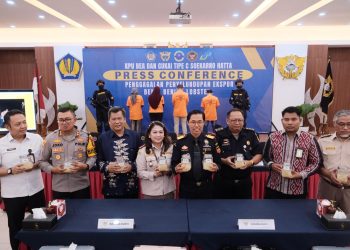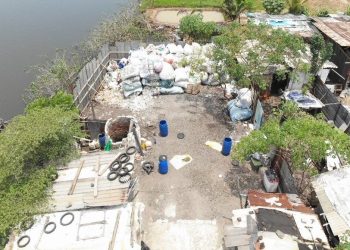Jakarta, Indonesia Sentinel — Renowned travel website Fodors.com has listed Bali in its “No List 2025”, deeming it a destination unworthy of tourism. According to the site, uncontrolled development driven by over-tourism has severely damaged Bali’s natural habitats, eroding its environmental and cultural heritage while creating a “plastic apocalypse.”
In an article published on Sunday, November 24, 2024, Fodor’s stated, “Bali’s tourism industry and natural environment are locked in a fragile and cyclical relationship: Bali’s economy thrives on hospitality, which depends on the health of its natural landscapes.”
The Tourism Boom and Its Aftermath
Data from the Bali Province Central Statistics Agency (BPS) reflects the island’s dramatic recovery in international tourism. Bali welcomed approximately 5.3 million foreign visitors in 2023, recovering to pre-pandemic levels. In the first seven months of 2024, foreign arrivals surged to 3.5 million, a 22% increase compared to the same period in 2023.
However, this rebound has placed immense pressure on Bali’s infrastructure, exacerbating environmental challenges. Beaches once celebrated for their pristine beauty, such as Kuta and Seminyak, are now buried under piles of trash. The island’s waste management systems struggle to cope with the growing influx of waste.
Alarming Waste Management Statistics
The Bali Partnership, a coalition of academics and NGOs focused on waste management solutions, reports that the island produces 1.6 million tons of waste annually, including nearly 303,000 tons of plastic waste. Unfortunately, only 48% of waste is responsibly managed, with a mere 7% of plastic waste recycled.
As a result, an estimated 33,000 tons of plastic end up in Bali’s rivers, beaches, and marine environments each year, posing severe threats to the island’s ecosystems. Kristin Winkaffe, a sustainable travel expert specializing in Southeast Asia, warned, “Bali’s waste management system is barely keeping up with the waste volume, and it’s far from sufficient.”
A “Plastic Apocalypse”
Gary Bencheghib, co-founder of Sungai Watch, a community-based environmental group protecting Bali’s rivers, described the situation as a “plastic apocalypse.” This sentiment echoes long-standing criticism from environmental organizations like the World Wildlife Fund (WWF), which noted in a 2007 report that Bali’s rapid tourism development lacked sustainable planning.
“Tourism development in Bali has proceeded rapidly, often without adhering to sustainable development guidelines, resulting in significant environmental damage to the island,” the WWF stated.
Indonesia Intangible Cultural Heritage Festival 2024, Showcasing 13 UNESCO-Recognized Traditions
Coastal and Marine Pollution
Bali’s environmental crisis extends beyond waste. According to the Asian Development Bank, coastal waters in Indonesia face increasing threats from excessive nutrients, organic compounds, and heavy metals originating from domestic waste, industrial discharges, mining, agriculture, and aquaculture. These pollutants jeopardize not only marine ecosystems but also Bali’s appeal as a global tourist destination.
Moving Toward Sustainability
Experts and environmental advocates emphasize the need for urgent action to address Bali’s mounting environmental challenges. Sustainable tourism practices, stricter waste management policies, and greater community involvement are essential to restoring the island’s natural beauty and ensuring its long-term viability as a travel destination.
(Becky)


























